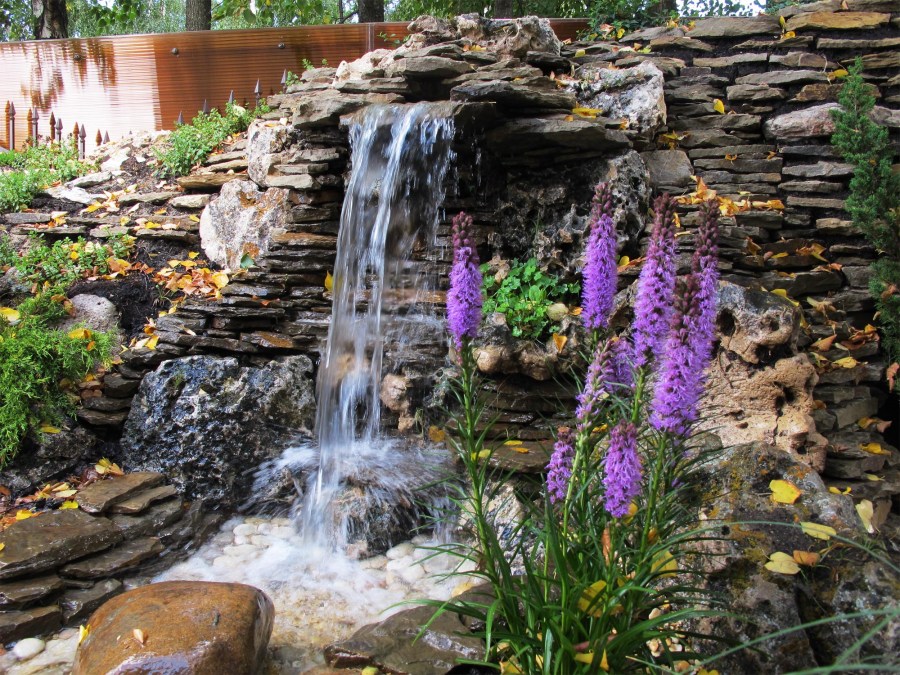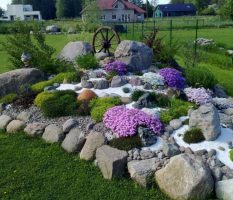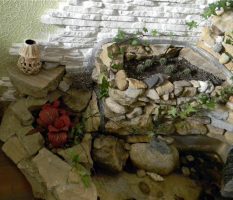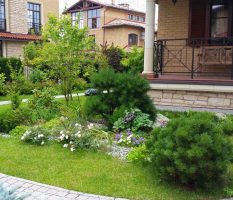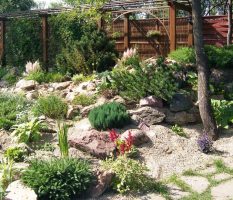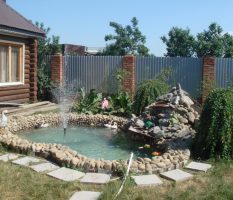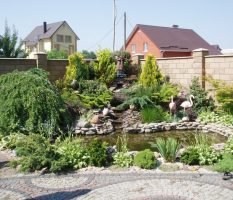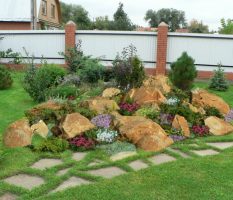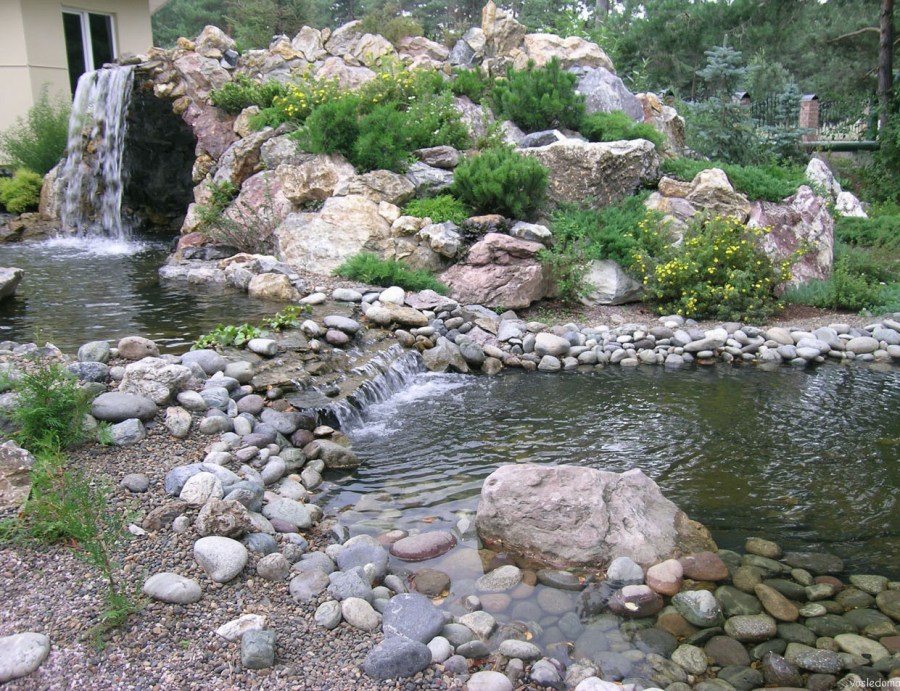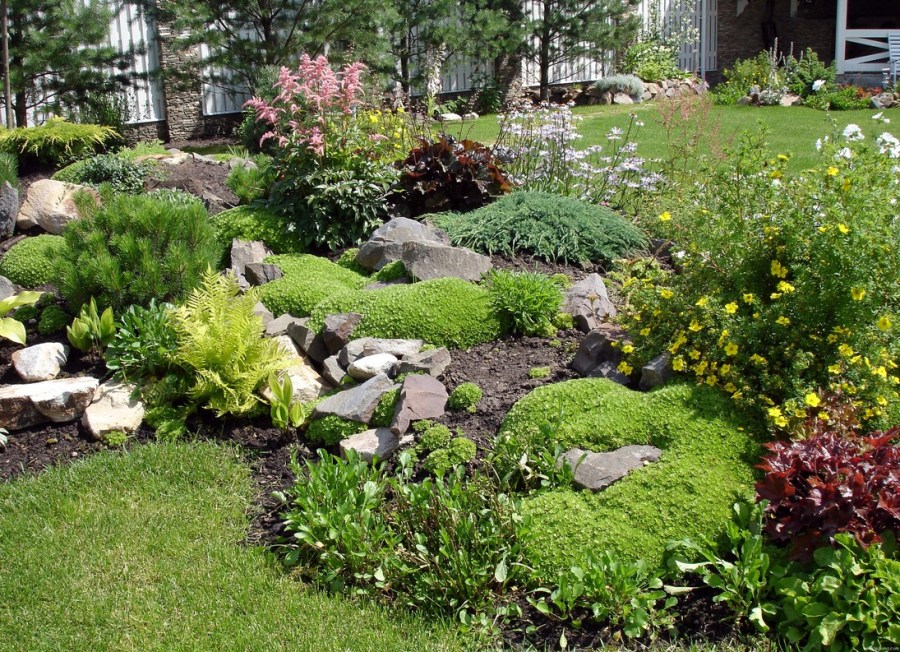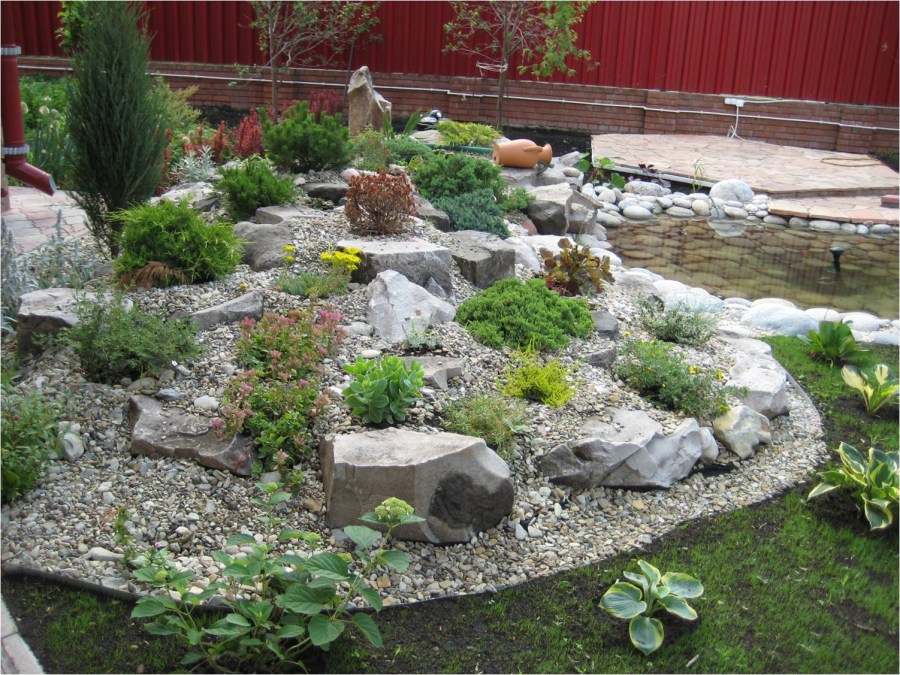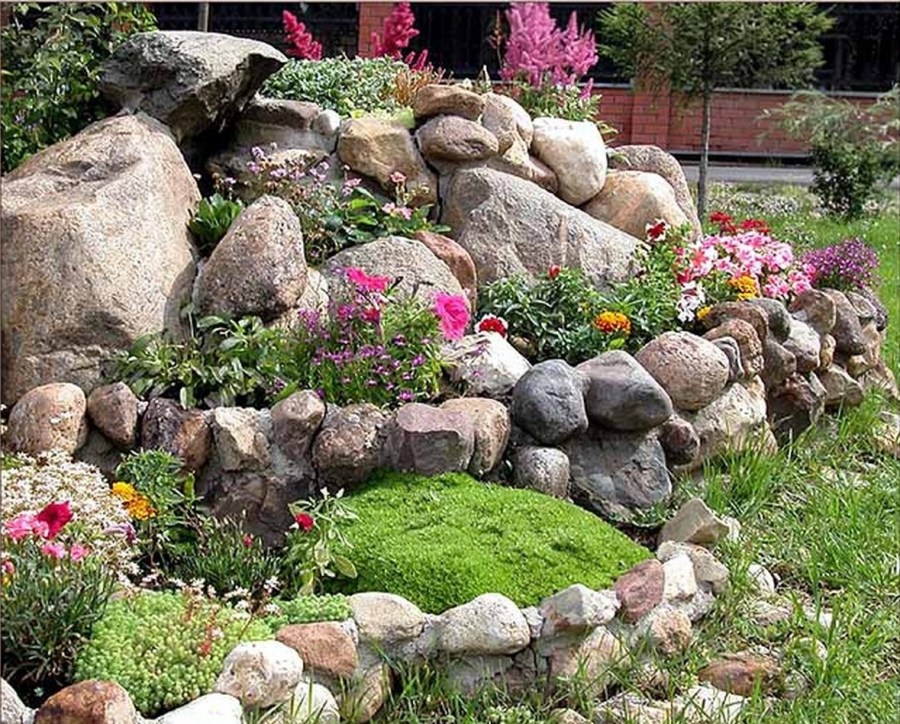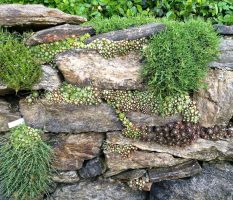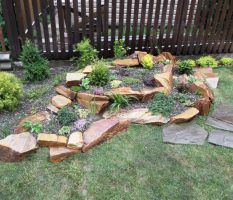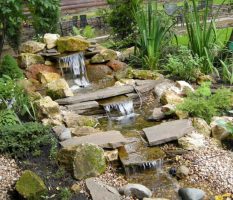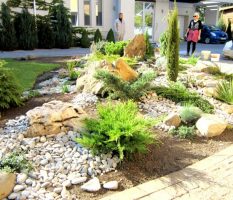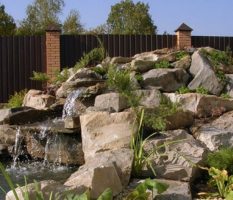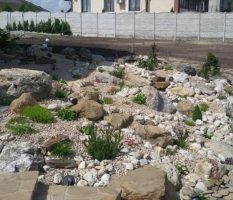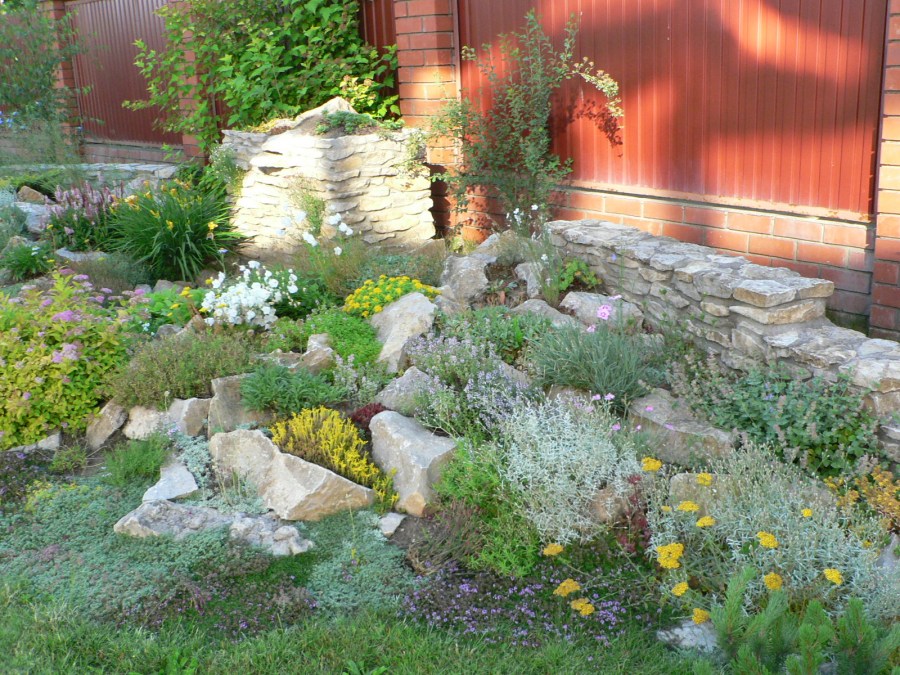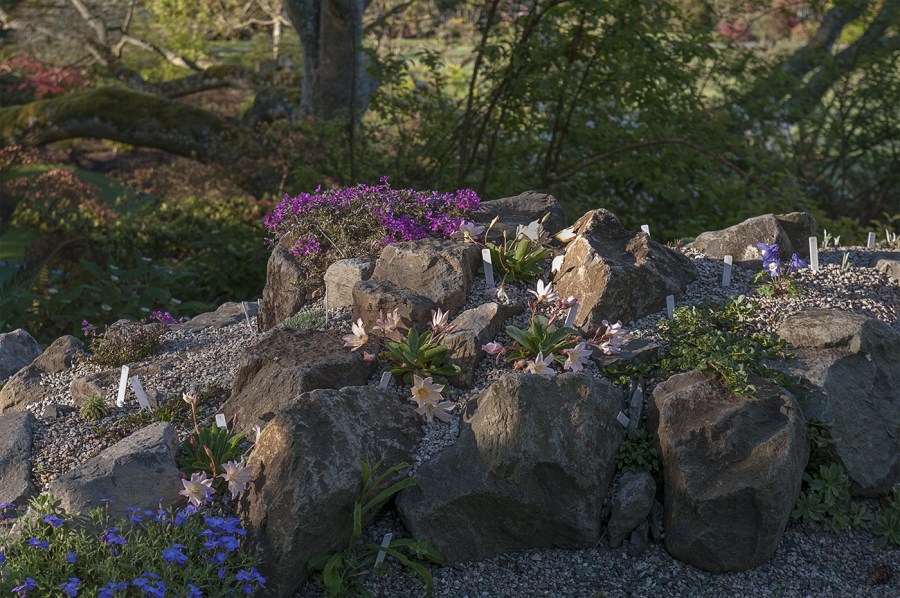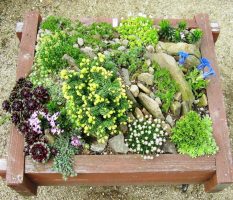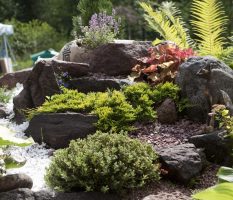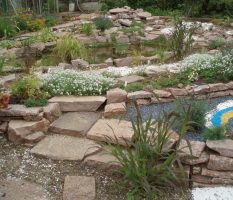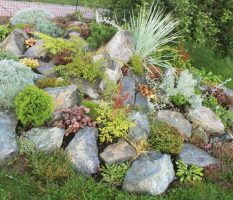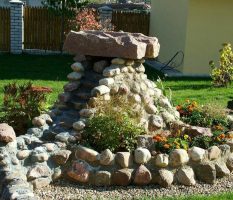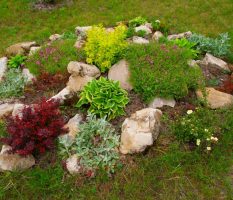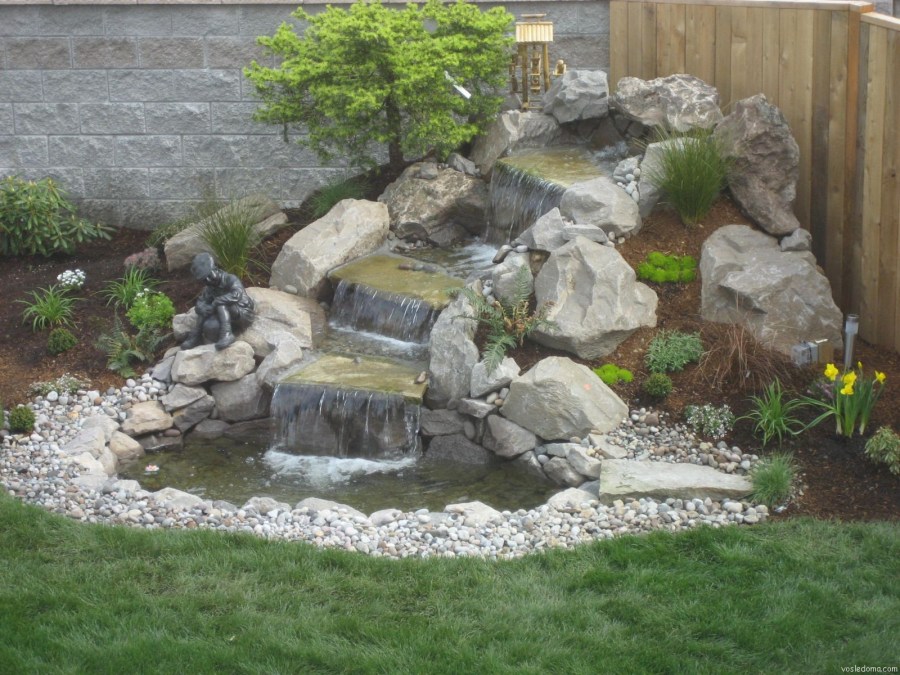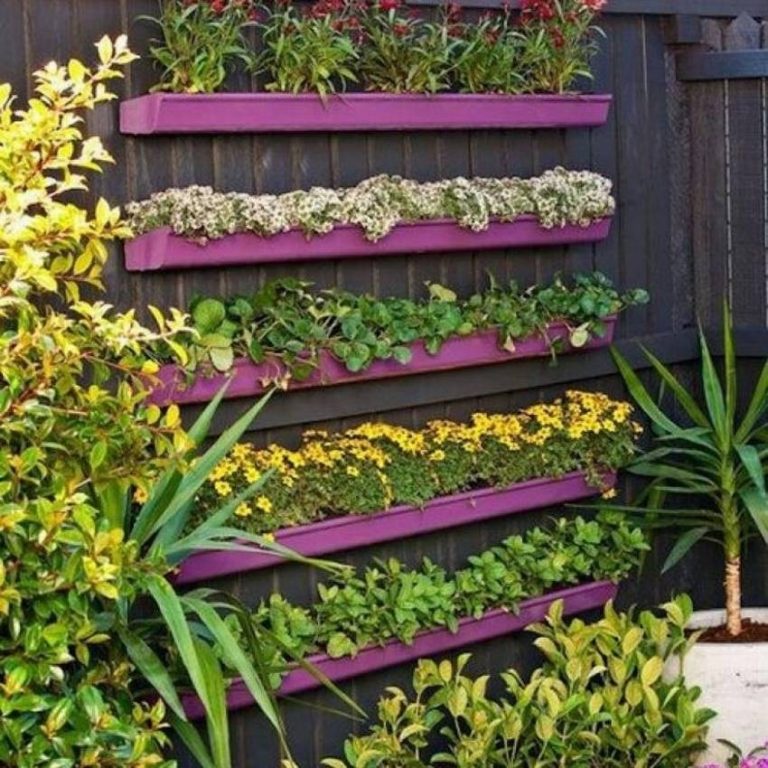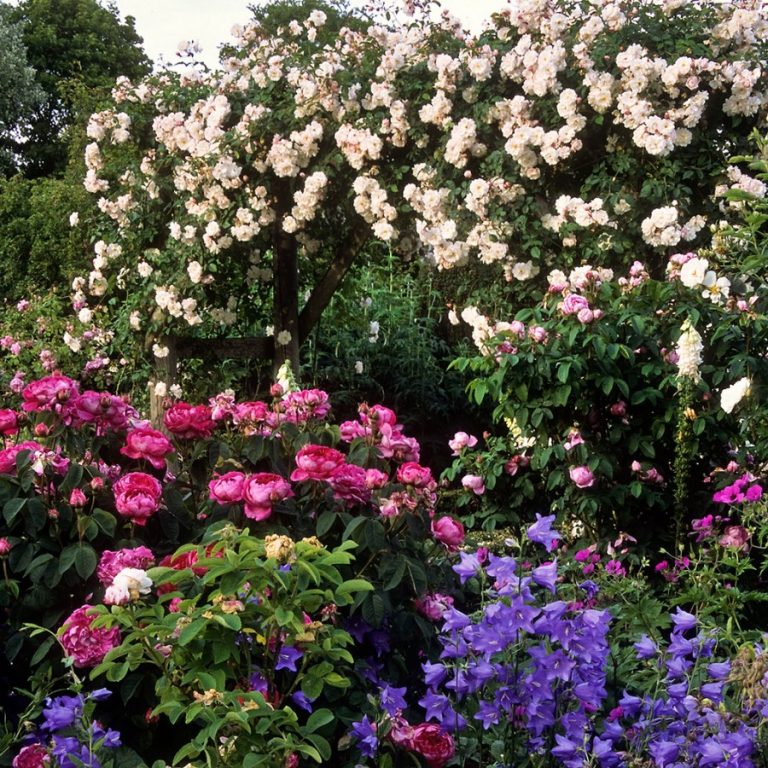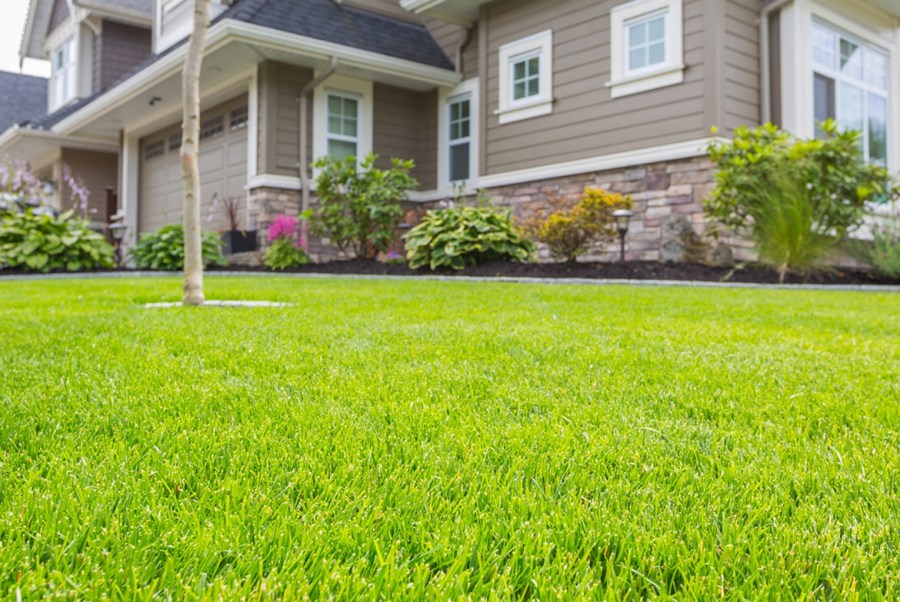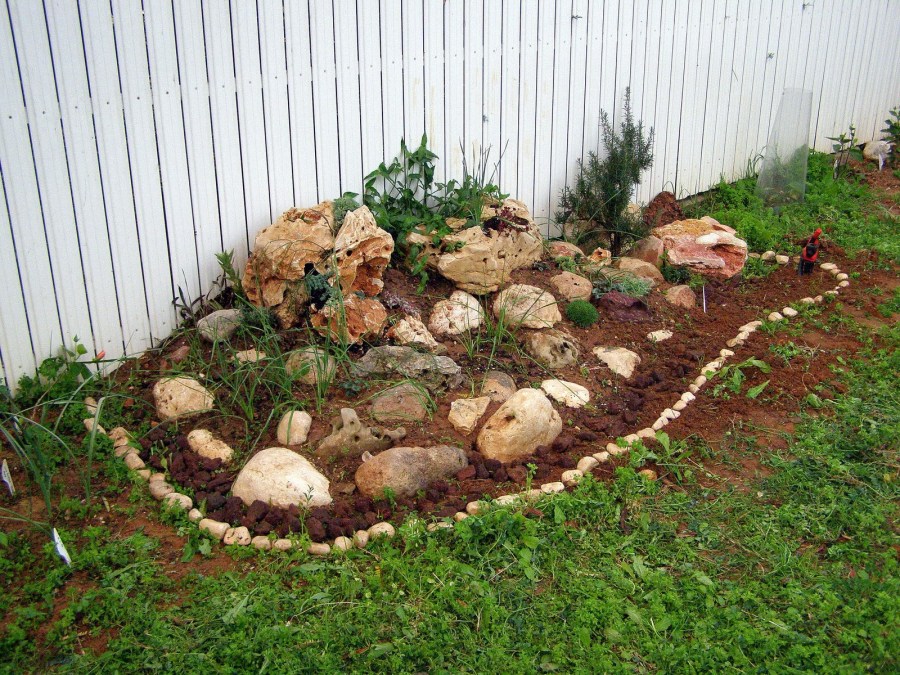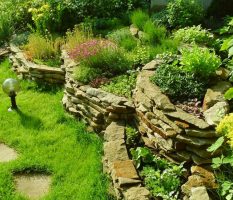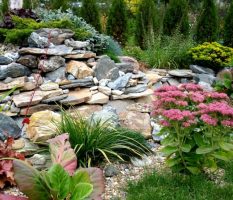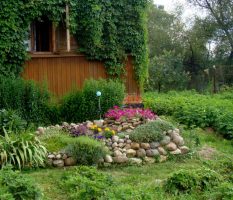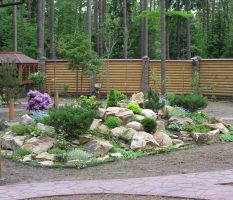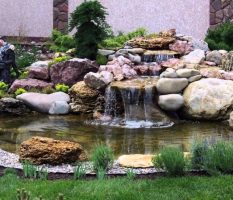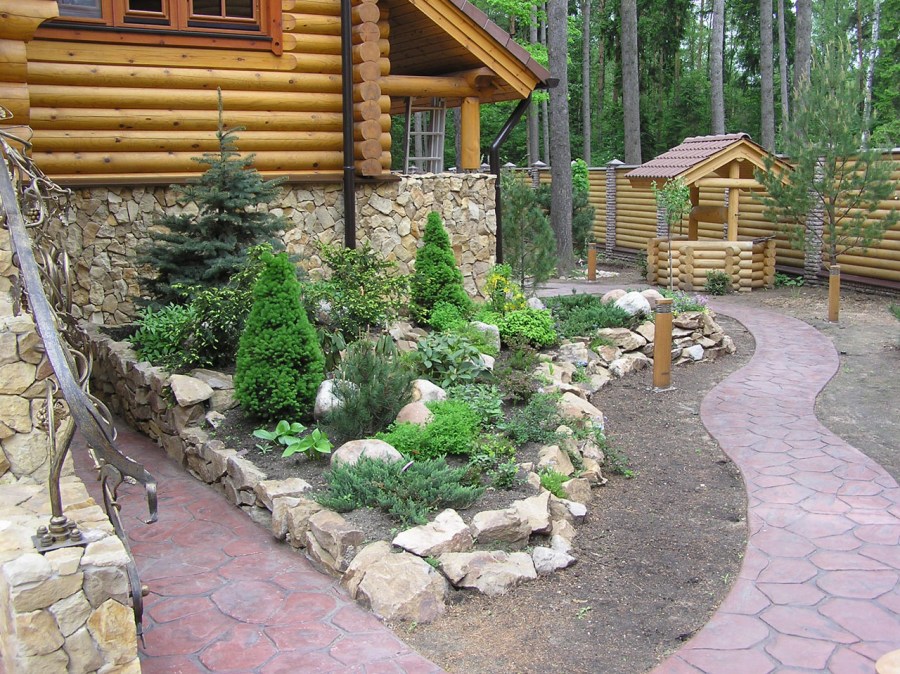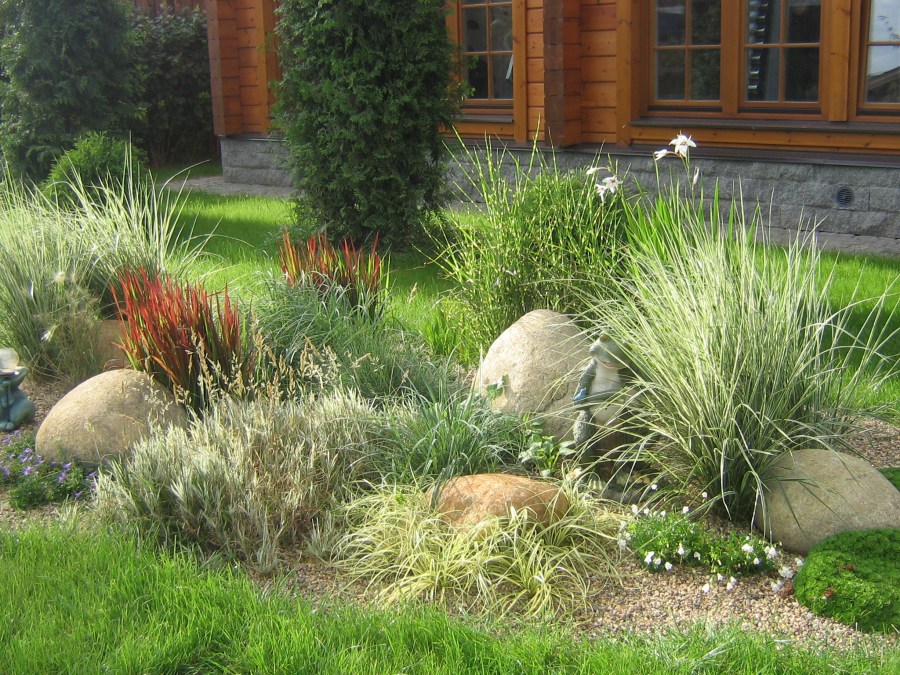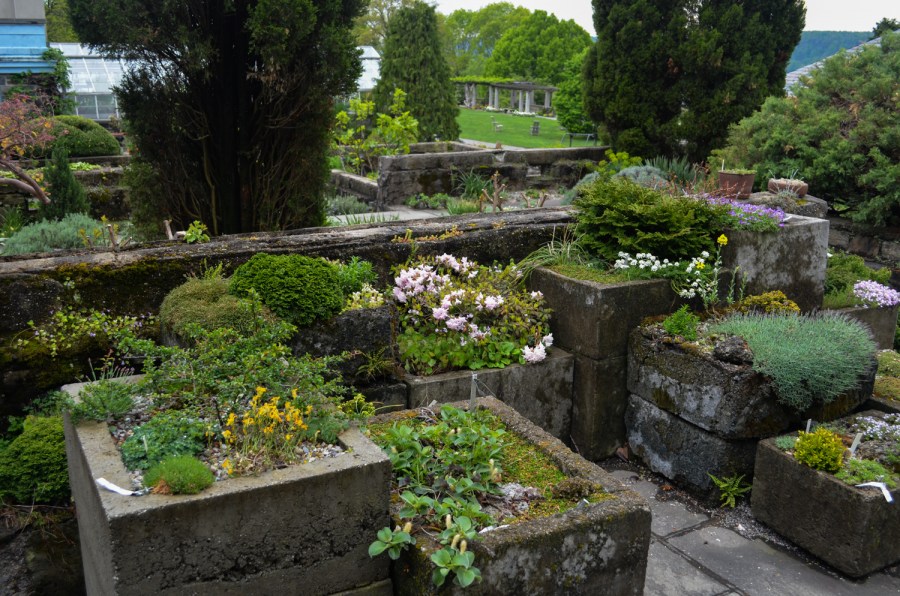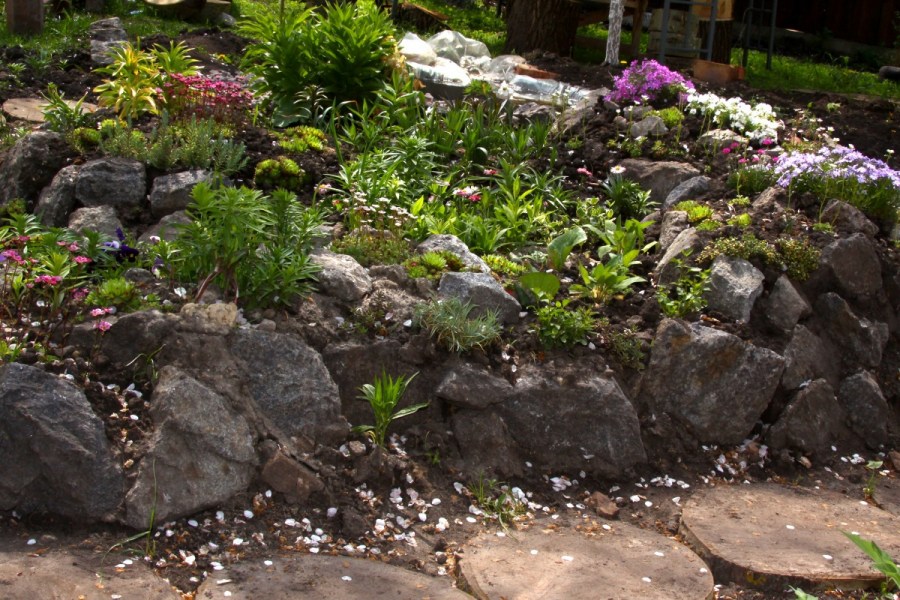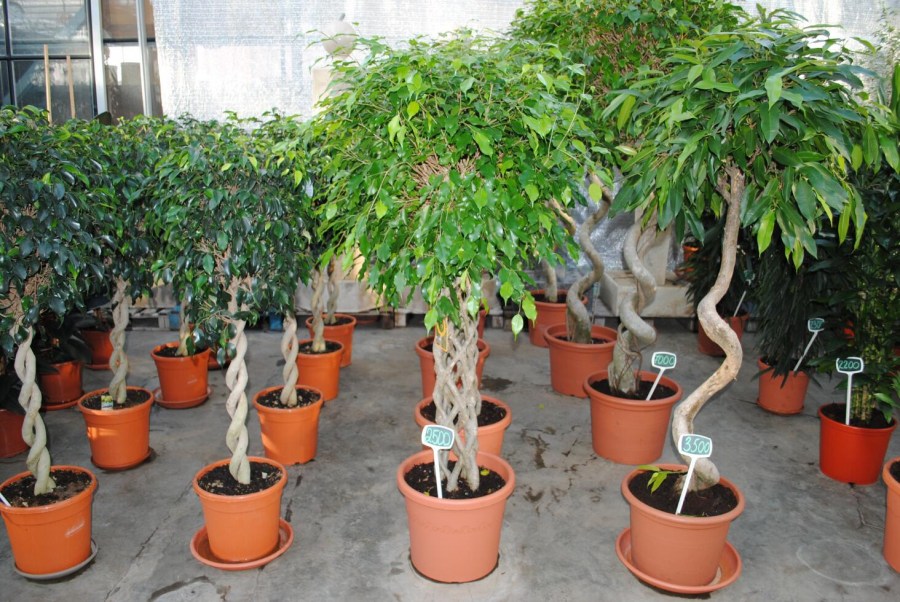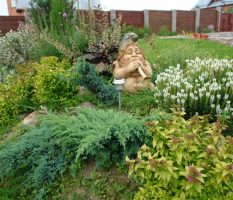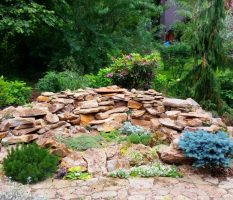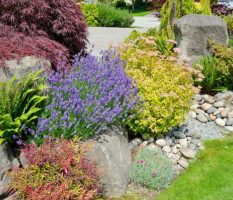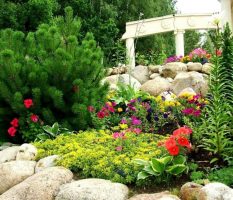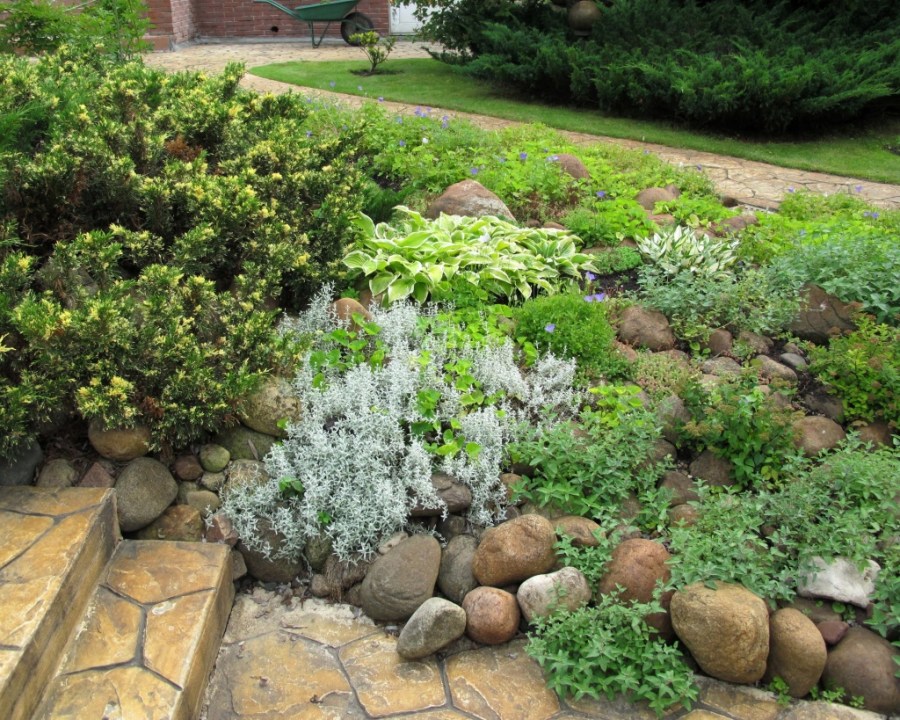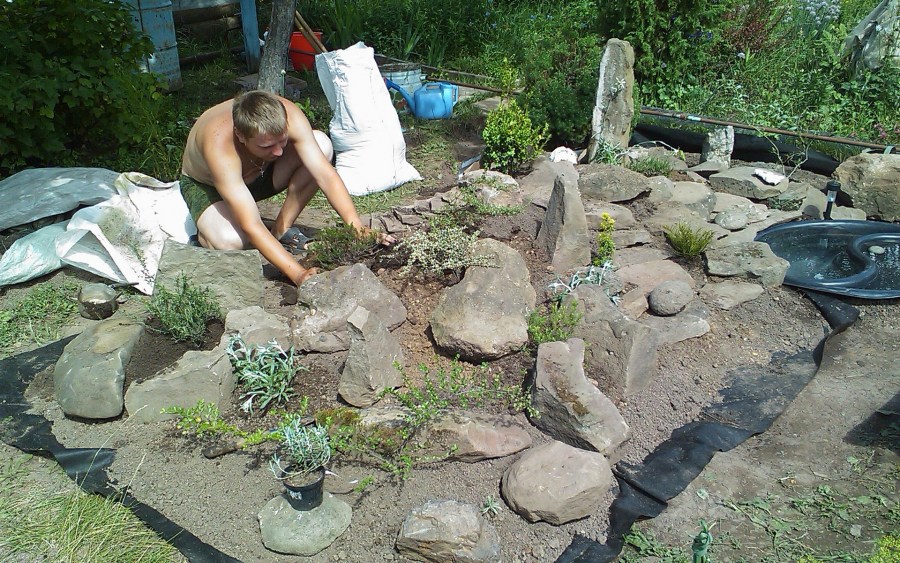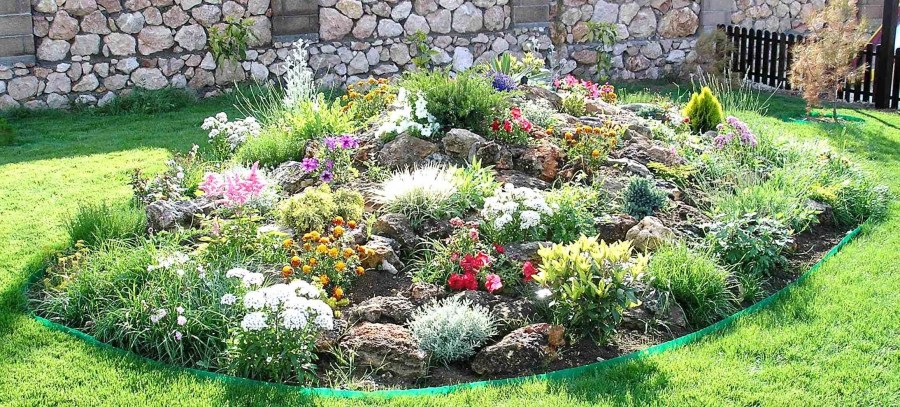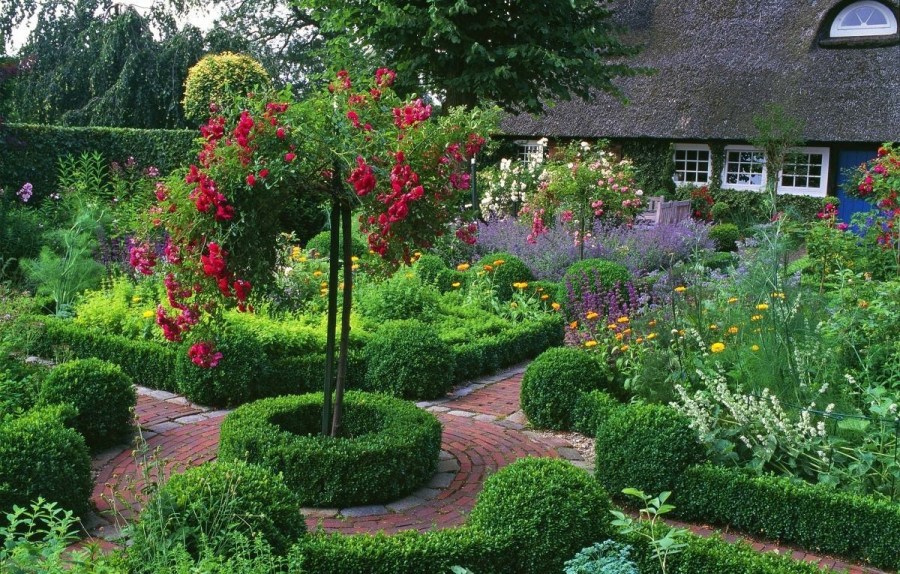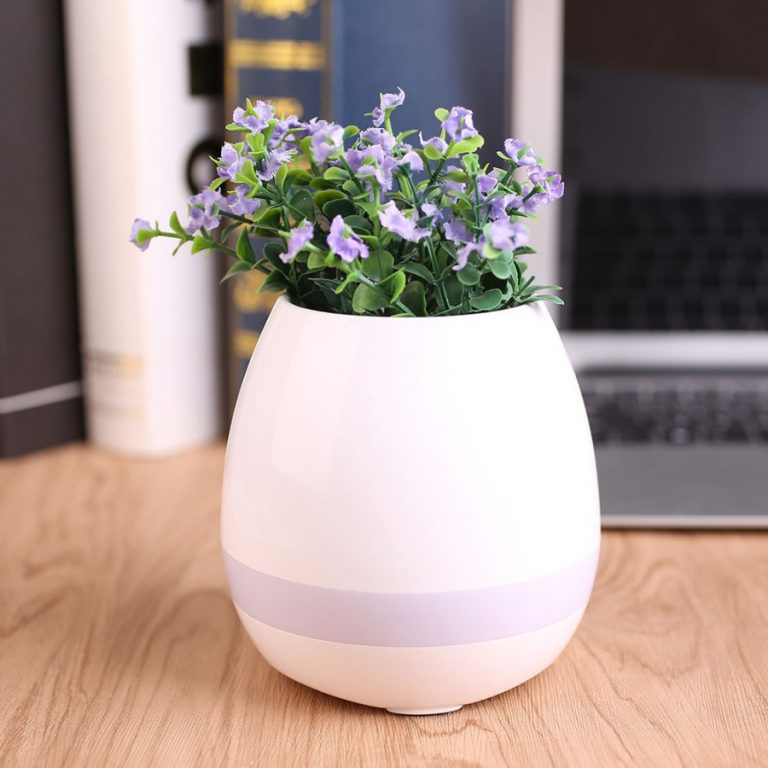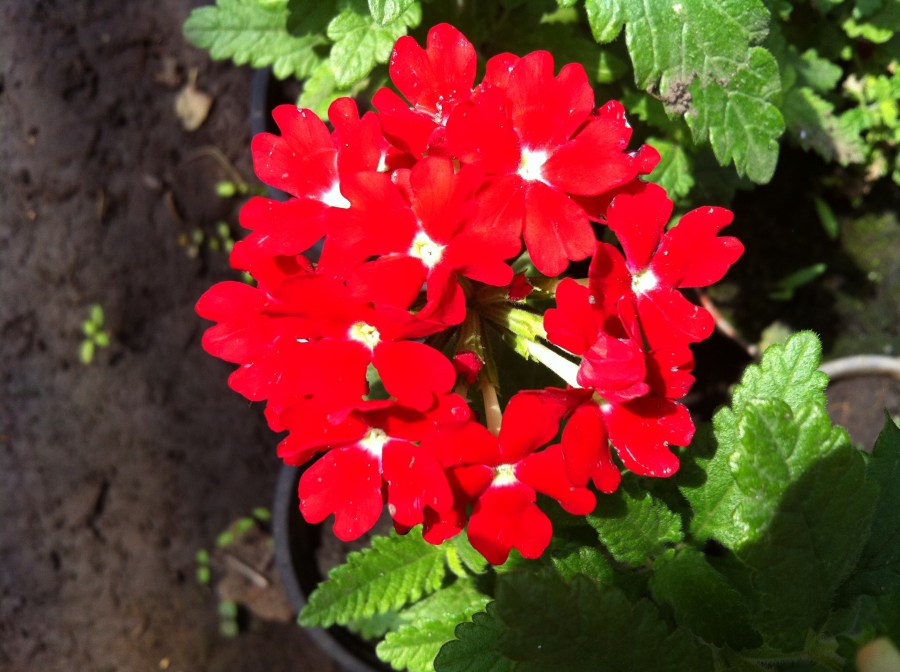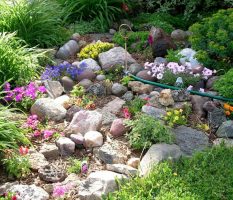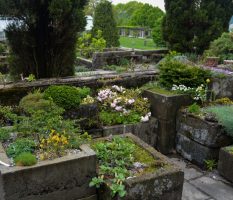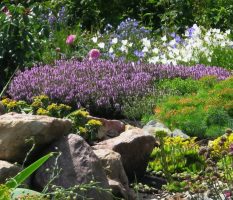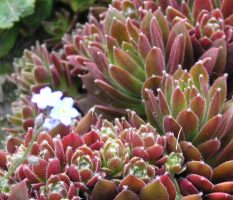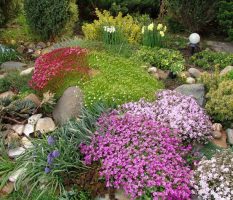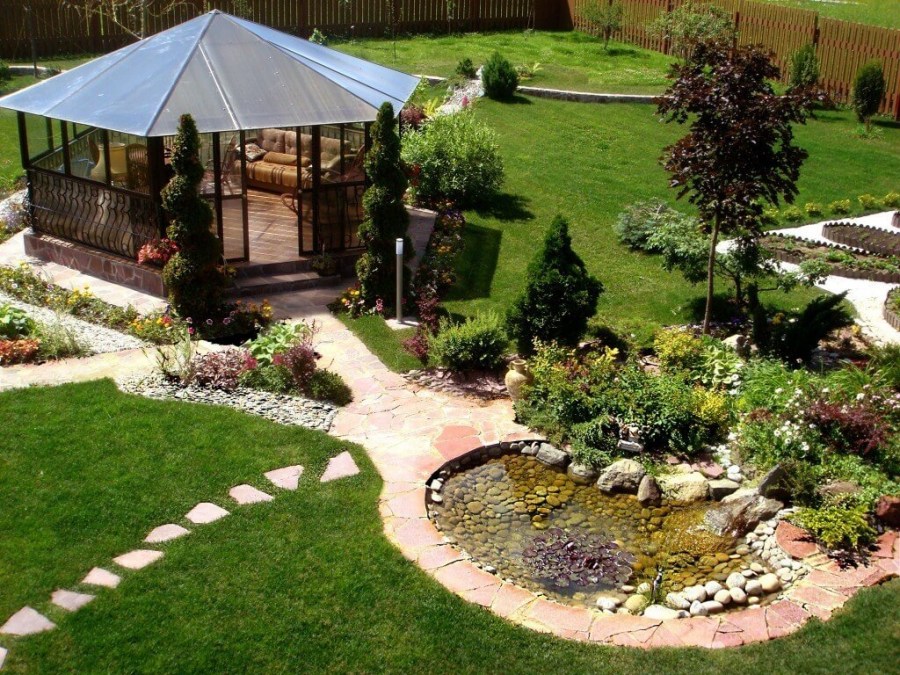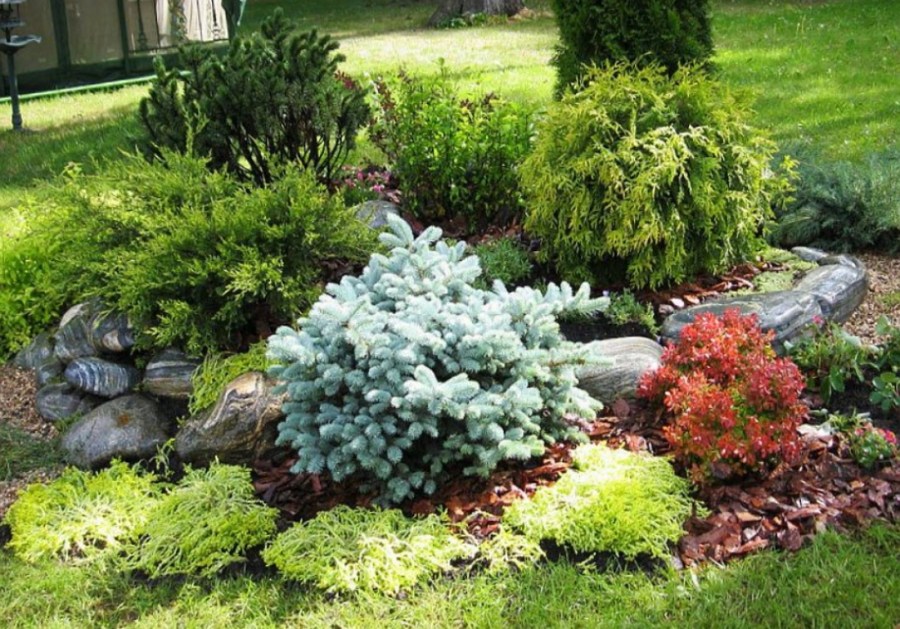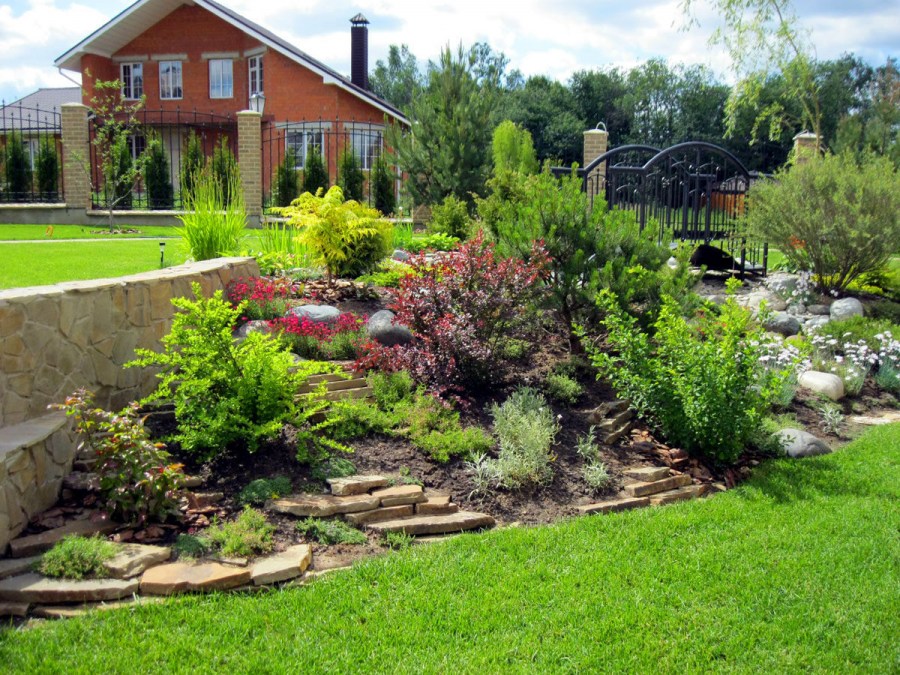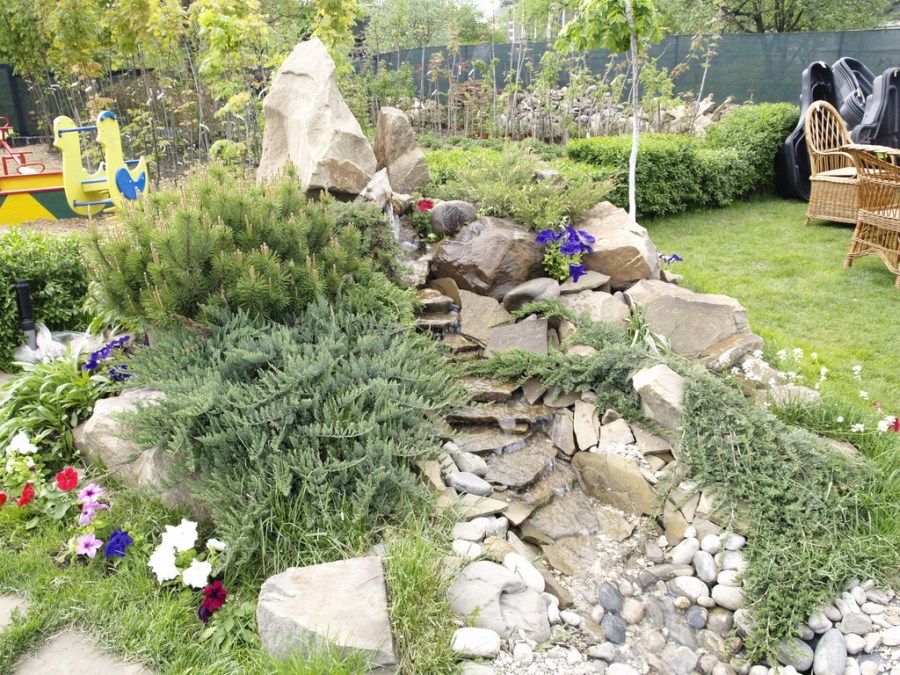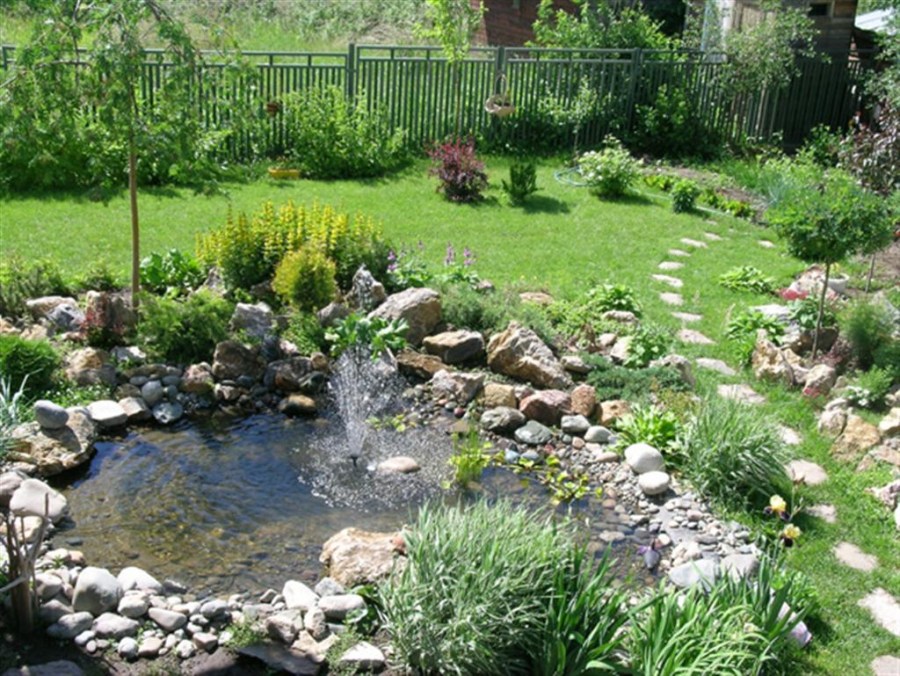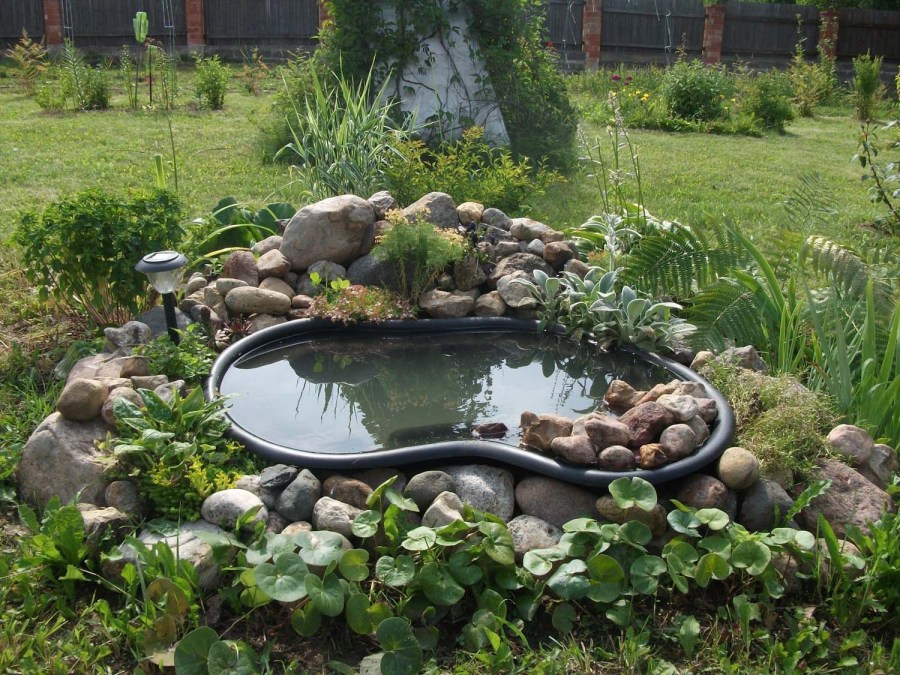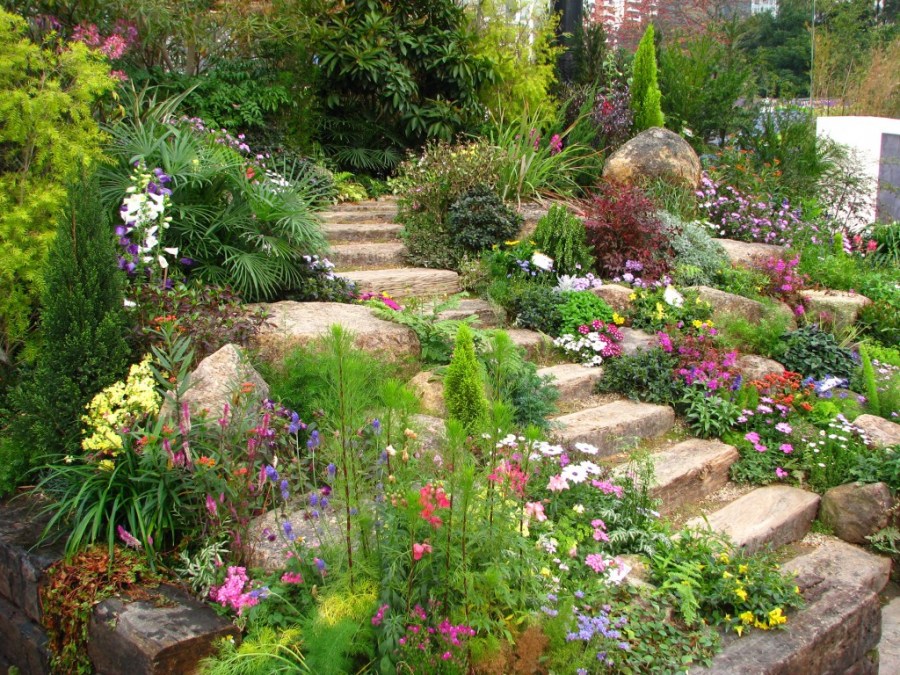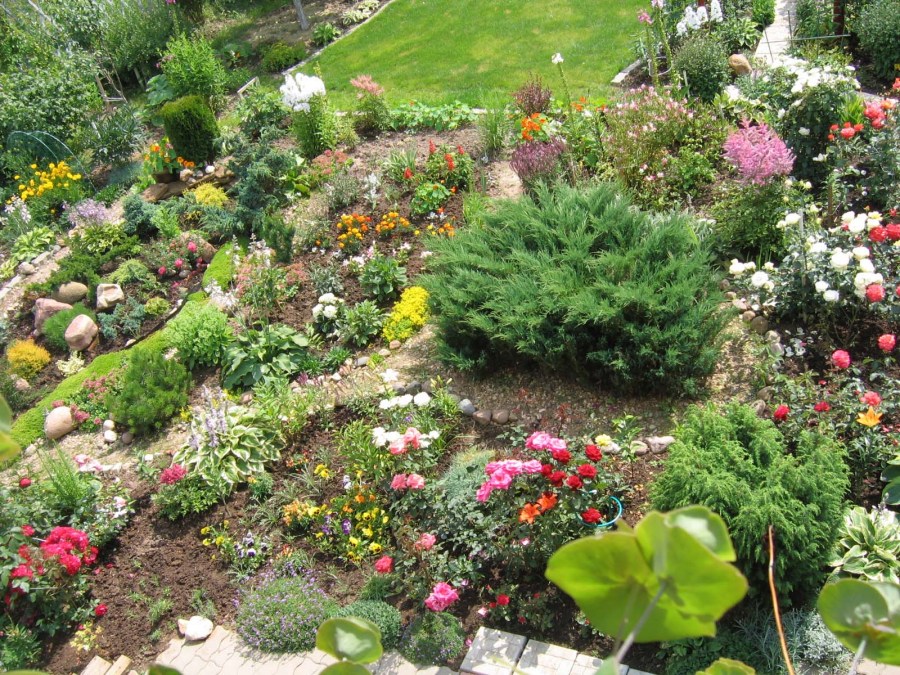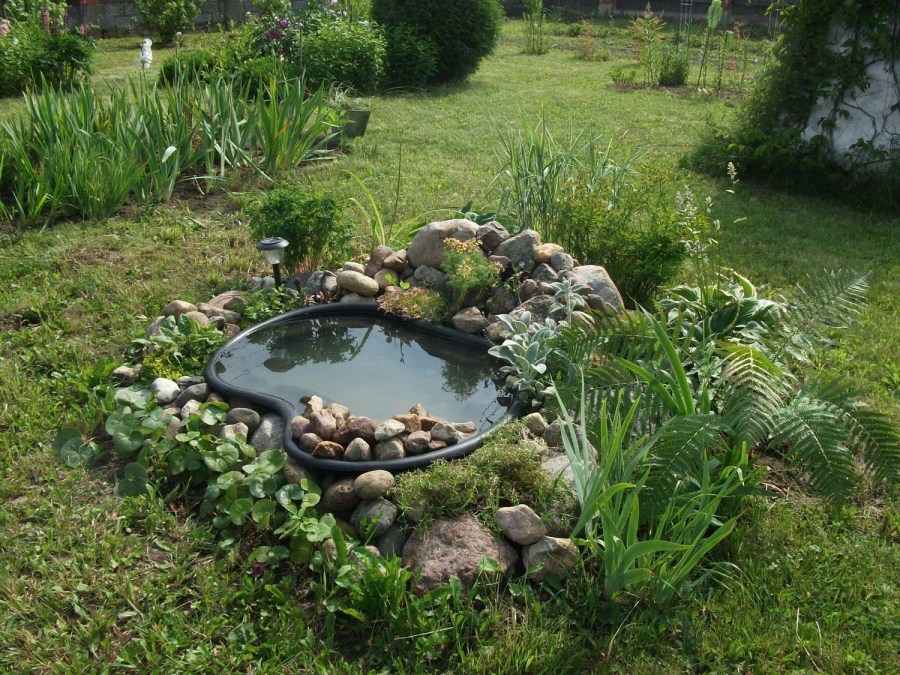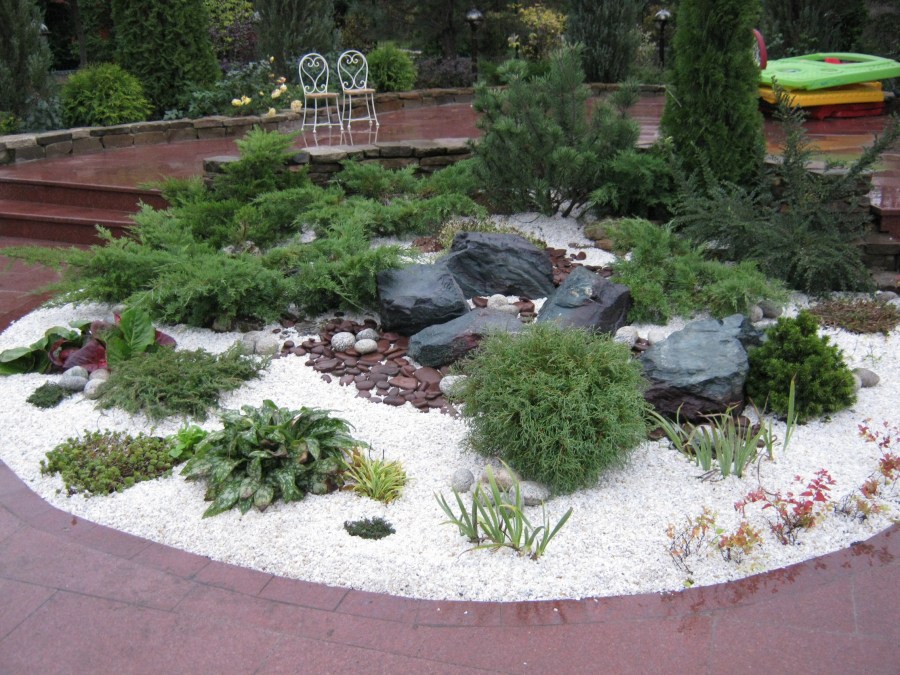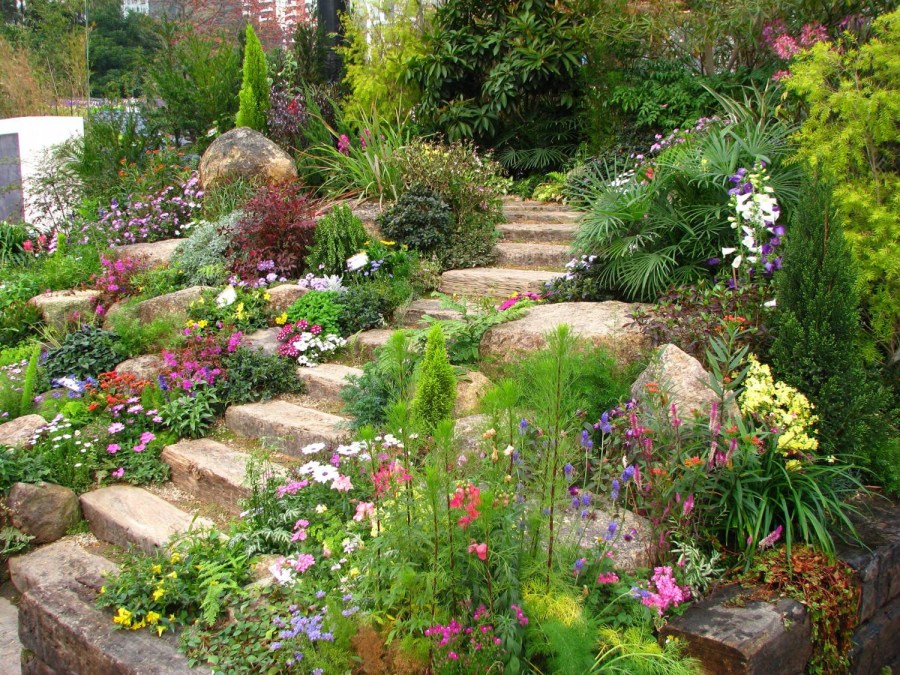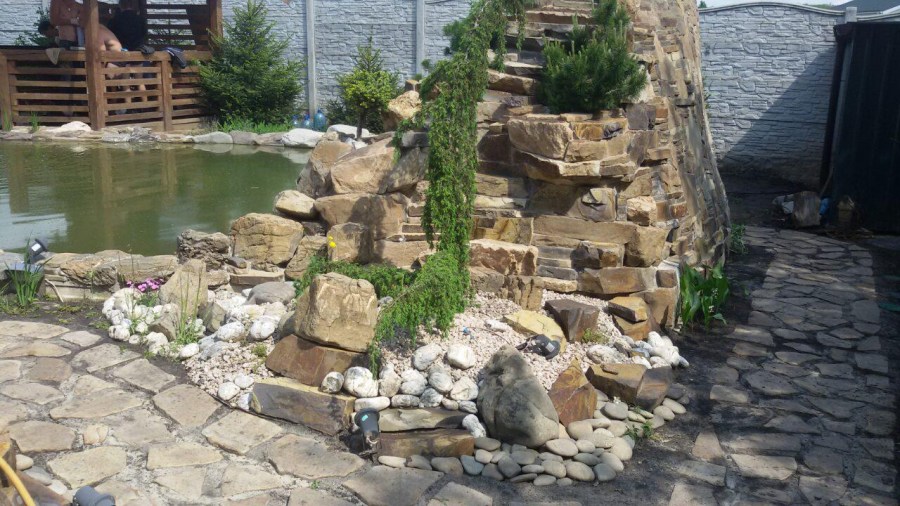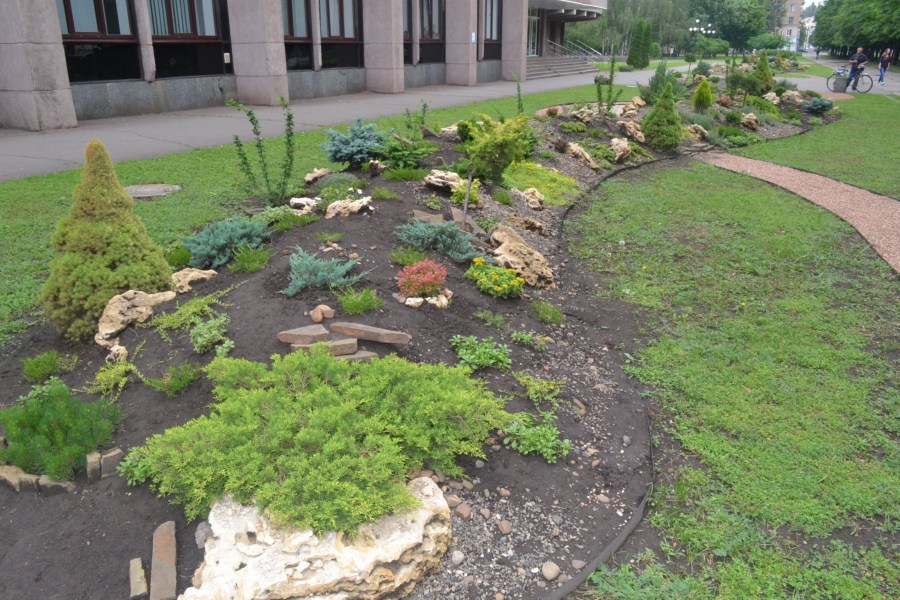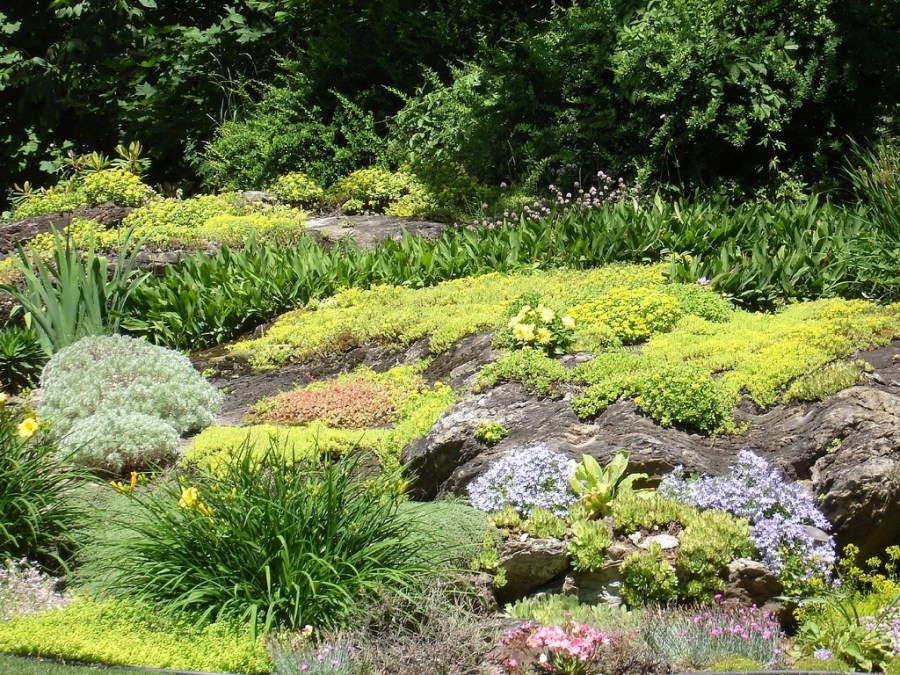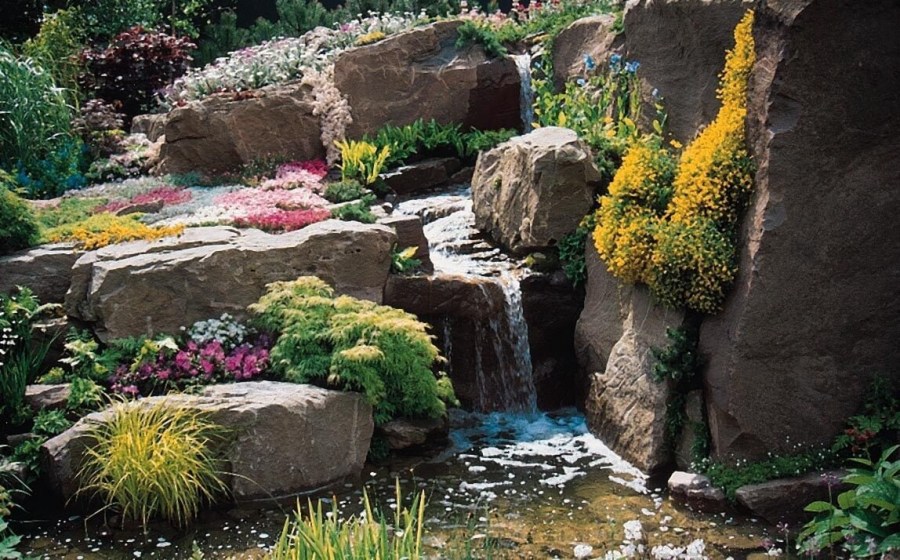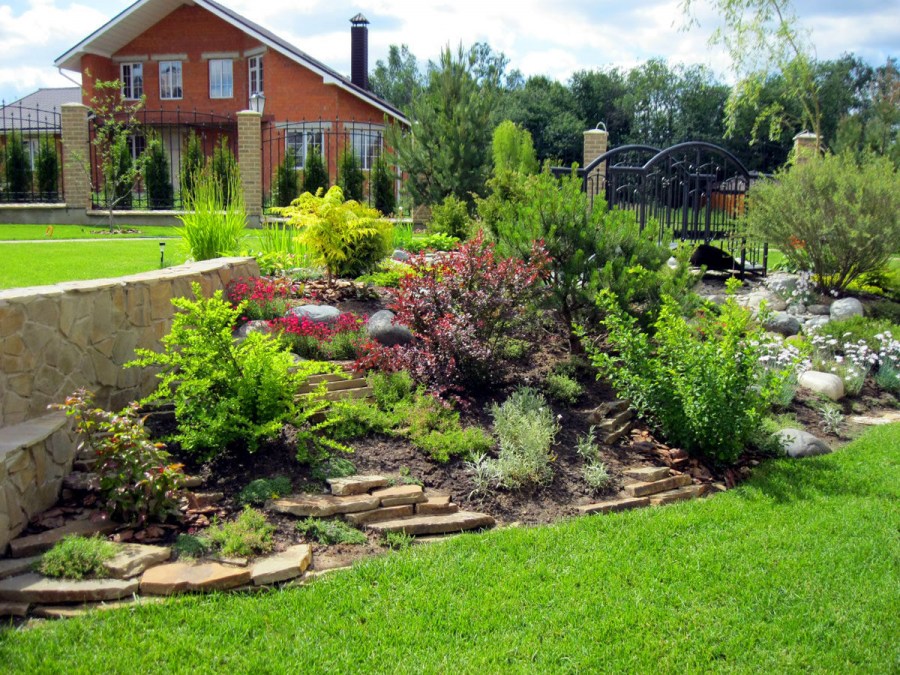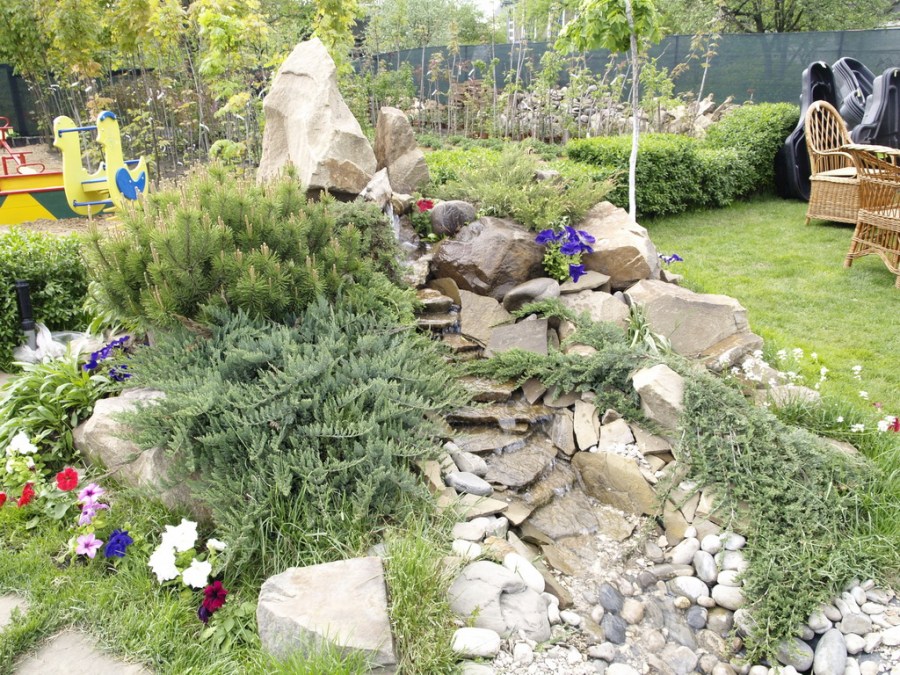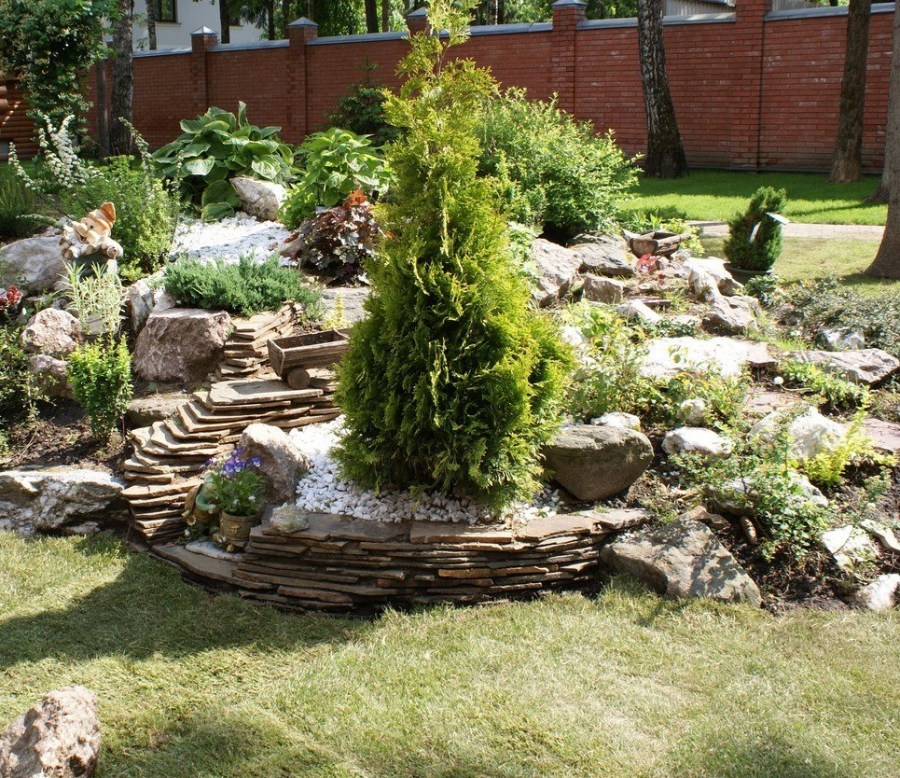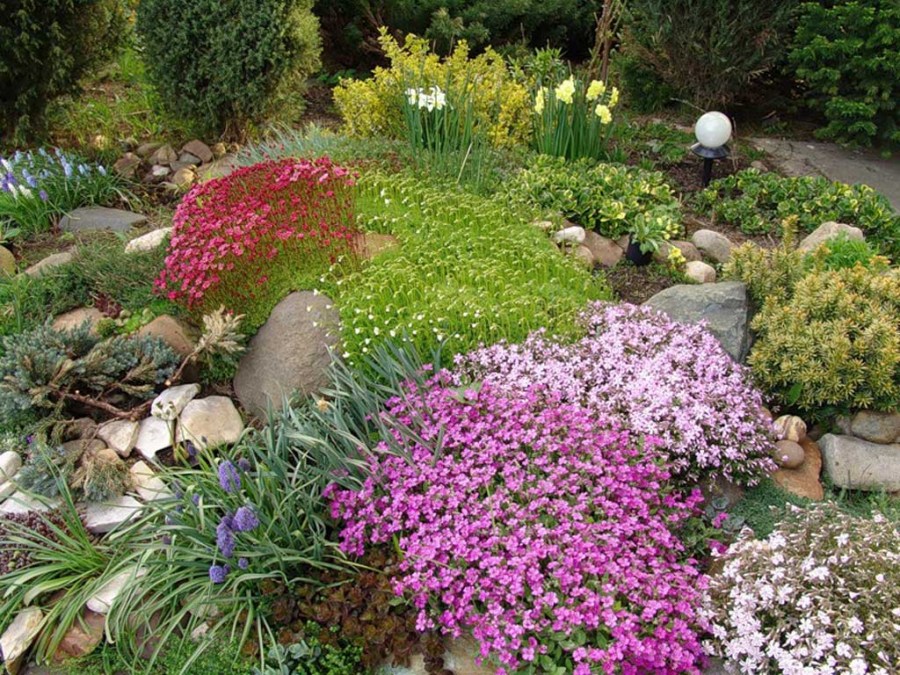Alpine hill: a review of the best ideas and the most beautiful design options (85 photos)
An alpine hill in the country is not only a fashionable attribute of landscape design, but also a great way to break a flower garden on a site with sandy or rocky soil, as well as make the house territory original and individual.
The presence of irregularities on the site will simplify the task of creating a rock garden, because usually it has the form of a rocky hill, a mountain slope or a ravine completely covered with pillows of flowers, grass and mosses.
Creating such an element of decor on a personal plot is not as easy as it seems. Therefore, this article contains a complete step-by-step instruction for beginners on the creation of an alpine hill.
Stage 1 - Choosing a suitable place on the site
When choosing a place for an alpine flower bed, it is necessary to take into account such factors as a combination of height and shape with the existing landscape, distance from households. buildings, playground, etc., a sufficient amount of sunlight and isolation from the wind.
It is better to choose a place where the flower garden will be visible from all sides of the site. Flower beds with lush and bright blooms and perennial shrubs and trees that can obscure the light when they grow should not grow near the selected site.
Also, when choosing a place, it is worth considering the organization of irrigation, the arrangement of the drainage system and pay attention to the type of soil.
Stage 2 - Drainage system
A drainage system is simply necessary on clay soils and when planting plants for which stagnation of water in the soil is not desirable and even harmful. Therefore, to begin the construction of an alpine hill, in order to avoid stagnation of water, it is worth digging a foundation pit of the required size and shape.
Having removed the top layer of soil, the foundation pit is covered with a layer of rubble, pebbles or broken brick. A sand cushion and a layer of earth are laid on the organized drainage, after which the site must be shed well and the soil should be allowed to shrink and dry. And only after shrinkage can you start laying stones.
Stage 3 - Selection and laying of stones
When choosing stones, you should think about how to make an alpine hill as natural as possible, natural, close to natural reliefs. To achieve this effect, you should not use many different breeds, it is better to take stones and boulders of different sizes, but one breed - so the flowerbed will be as similar to the prototype from the wild as possible.
The size of the stones depends on the scale of your project - boulders are suitable for a large slide, and small stones are suitable for a compact one.
For the construction of an alpine hill with your own hands, you should not choose porous rocks that easily absorb moisture, such as shell rock and dolomite. But ordinary natural granite is perfect, in addition there are stones that have rich colors and an interesting pattern.
Decorative sandstone is also often used, it is easy to process, so you can give it a shape that matches your idea. Such rocks as basalt, organic limestone, jasper, forest boulder, serpentine, travertine, quartz, serpentinite, elbrus, etc. are suitable for creating an alpine hill.
Having chosen the stones, we start laying, here it is important not to adhere to any specific schemes, clear geometric shapes and symmetry. The main thing is to achieve maximum naturalness, because in the wild stones are randomly arranged.
Rock garden stones should be installed, starting from the largest around, around the perimeter, to smaller ones in the center.During installation, stones should be dug into the ground, and if necessary, boulders are strengthened with crushed stone so that they do not swing.
Small stones must be positioned so that precipitation cannot wash them off. Alpine slides are laid out in several tiers, the largest boulder symbolizes the top of the mountain, so it is better to choose a cone-shaped one.
Installing stones should be chaotic, periodically moving aside and inspecting the composition from all viewed angles. The slide should attract the eye even without planted plants, when you have achieved such an effect, then the flowerbed is ready.
Of course, between the stones you need to leave a place for planting, and fill crevices and platforms for planting plants with fertile soil. When the earth settles under the stacked boulders, you can start planting the plants.
Stage 4 - Selection and planting of plants
When choosing plants for an alpine hill, the following factors must be considered:
- unpretentiousness - plants that take root well in any climate and soil will facilitate the care of the alpine flower garden;
- should choose undersized and perennial shrubs that do not grow over time, and do not close the entire hill;
- cohabitation of selected species next to each other;
- so that the rock garden is pleasing to the eye all year round, it is worth combining conifers with decorative deciduous. And they, in turn, will make the composition original even in the absence of colors.
In the classic version, miniature trees and shrubs are usually planted, for example, mountain pine or juniper, as well as perennial herbs and flowers, such as oregano, shake, lavender or lily of the valley.
To give naturalness and durability, different types of plants should be combined:
Flowers for an alpine slide must be selected based on the duration and flowering period. Small onion flowers, like stunted tulips, Scylla or crocuses, will delight you in the spring. In the future, they will be replaced by barberry, buttercups, cloves, edelweiss, phlox, saxifrage, or even decorative strawberries. Stingrays, Himalayan geraniums, alyssum, colchicum also bloom beautifully.
Onion and bulbous will please with their long flowering. Snowdrop, Corydalis, clivia, babiana, tecophileas, dwarf irises and dahlias.
Place cover plants on the slopes, their powerful root system will prevent erosion of the hill. These include fern and euphorbia, tenacity and young, geyhera and stakhis.
Grasses should be stunted, they act as the background and juicy decoration of the hill during the period when the flowers no longer bloom, the mountaineer, Erica, alissum, feather grass, Esholz will do.
Shrubs and dwarf trees require the most spacious areas, so they are the first to plant. Among them may be dryad, Korean fir, euonymus, spirea, cotoneaster
Moss and lichen bring the flower garden closer to the wild, limestone is suitable for their growth. You can transplant moss from the forest, for this, the land collected from the moss pads is ground in a blender with 2 tablespoons of sugar and 200 g of kefir, and the stones on which the moss is planted are greased with a mixture.
Stage 5 - Caring for the rock garden
Having finished landscaping on a site selected for an alpine hill, its creation cannot be considered complete, so that the created beauty pleased you for a long time it is necessary to properly care for it.
During the first year, you will have to add soil washed out by precipitation several times; you may need to strengthen the stones.
Plants need watering, and fertilizing with fertilizers that do not cause strong growth, do not overfeed the plants so that they do not outgrow.
It is also necessary to remove faded flowers, damaged and dry leaves. Treatment of plants from pests and treatment of plants is carried out if necessary.
Creating an alpine hill requires a long time and planning, it is better to do the preparation of drainage and laying stones in the fall, and planting the plants in the spring, after complete shrinkage of the earth. To create a beautiful and maximally natural composition, do not use artificial decor, as well as pre-view photos of alpine slides made by professionals.
Inspired by the creation of a rock garden with your own hands, you can add variety to the landscape design of the infield and give it uniqueness, you just have to trust your imagination.
Alpine slide photo
Crafts for giving: 90 photos of non-standard design options
Washstand - 55 photos of examples of optimal design for the garden
Magnolia flowers: species description, 90 photos of beautiful magnolia in the garden
Mineral wool mineral insulation: 90 photos + step-by-step instructions for beginners
Join the discussion:

